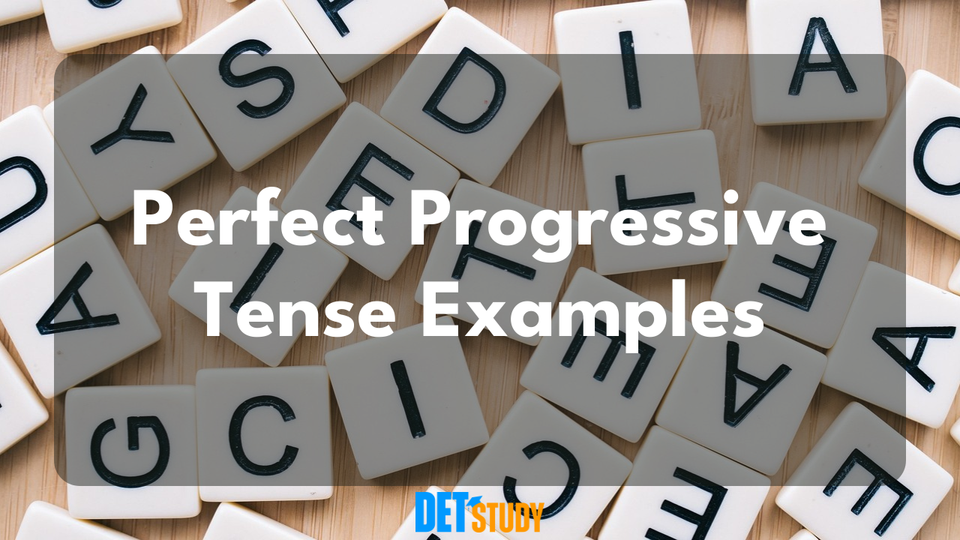Perfect Progressive Tense: Practical Examples for Polished English Writing

Introduction to Perfect Progressive Tense
The perfect progressive tense, also known as the perfect continuous tense, combines perfect and progressive aspects. It highlights actions that started in the past, continued for a duration, and may still be ongoing or had ongoing effects. It emphasizes the duration of an activity. ⏳
Key Formations and Uses:
- Present Perfect Progressive Tense: - Formation: "have/has been" + present participle (-ing verb) - Used for actions that began in the past and continue now, or whose effects are still felt. It often uses "for" (duration) or "since" (start point).
Examples: - "She has been studying for three hours." (Still studying) - "They have been playing soccer since 2 PM." (Likely still playing) - "I have been reading this book for two weeks." (Reading continues or its impact is current.)
- Past Perfect Progressive Tense: - Formation: "had been" + present participle (-ing verb) - Describes an action ongoing in the past, before another past action occurred. Common with "before," "when," "until," or "by the time."
Examples: - "I had been working for five years when I got promoted." (Work was ongoing until promotion.) - "By the time we arrived, they had been waiting for over an hour." (Waiting was ongoing when we arrived.) - "We had been discussing the plan for hours before we finally agreed." (Discussion led to agreement.)
- Future Perfect Progressive Tense: - Formation: "will have been" + present participle (-ing verb) - Used for actions that will be ongoing up until a specific future moment or event. Often uses "by," "for," or "when."
Examples: - "By next year, she will have been living here for a decade." (Living will reach 10 years.) - "We will have been traveling for 10 hours by the time we reach our destination." (Travel continues up to arrival.) - "By next summer, I will have been studying at the university for three years." (Study duration will reach 3 years.)
The perfect progressive tenses are crucial for emphasizing an action's duration and how it connects with other events over time. 🌟 Regular practice with these tenses helps build fluency. 💪
Save Money on Your Duolingo English Test with Official Coupon CodeTense Structures
This section outlines the structure of each perfect progressive tense. Each form gives a nuanced view of activities and their duration.
Present Perfect Progressive
- Structure:
have/has been+ present participle (verb+ing) - Usage: For actions that began in the past and continue into the present, or whose effects are relevant now.
Examples: - "I have been reading this book for two weeks." - "She has been learning French since January." - "They have been working on the project all day."
Past Perfect Progressive
- Structure:
had been+ present participle - Usage: Describes an activity ongoing in the past up until another past event.
Examples: - "He had been jogging every morning until he moved away." - "We had been discussing the plan for hours before we finally agreed." - "She had been working at the bakery for a year before she got her new job."
Future Perfect Progressive
- Structure:
will have been+ present participle - Usage: For actions that will be ongoing up until a specific future moment or event.
Examples: - "By next summer, I will have been studying at the university for three years." - "In December, he will have been working there for a decade." - "They will have been volunteering at the shelter for a month by the time we visit."
Mastering these forms helps learners express complex temporal relationships and continuous actions in various contexts. Practice reinforces understanding. ✅
Present Progressive Examples
This tense describes actions that started in the past and continue now, or recently stopped but are still relevant. Form: "have/has been" + present participle (-ing).
Practice English NowExamples:
-
"I have been studying for my exams all week." (Studying continues.)
-
"She has been playing the piano since she was six years old." (Playing is ongoing.)
-
"They have been working on this project for several months." (Work is still happening.)
-
"We have been waiting for the bus for forty minutes." (Waiting continues.)
This tense, often with "for," "since," or "lately," highlights ongoing actions and their duration from past to present, enriching your narrative. ✍️

Past Progressive Examples
This tense describes an action ongoing in the past that finished before another past action or time. It emphasizes duration over completion. Form: "had been" + present participle (-ing).
Examples:
-
"I had been studying for hours before the power went out." (Studying interrupted.)
-
"She had been living in Paris for a year when she got the job offer." (Living concluded around the offer.)
-
"They had been arguing about the new policy until they reached an agreement." (Arguing stopped with agreement.)
-
"By the time Mark arrived, we had been cooking for two hours." (Cooking happened before arrival.)
Commonly used with "before," "when," "by the time," and "until," this tense helps articulate sequences of past actions and their durations. 📚
Future Progressive Examples
This tense describes an ongoing action that will continue up to a future point, emphasizing its duration. Form: "will have been" + present participle (-ing).
Free English PracticeExamples:
-
"By next month, I will have been working here for five years." (Work reaches five years.)
-
"She will have been studying for three hours by the time her friends arrive." (Study precedes arrival.)
-
"They will have been traveling for 48 hours by the time they reach their destination." (Travel duration reaches two days.)
-
"By next spring, the organization will have been operating for half a century." (Operations reach 50 years.)
Paired with "by," "for," or "when," this tense adds precision to future scenarios, especially for ongoing actions before milestones. Improve clarity and depth in your communication! ✨
DET Study provides an extensive suite of over 15,000 practice questions, focusing on leveraging adjectives and adverbs to fortify your grammatical skills. Regular practice with these targeted materials ensures that you approach the Duolingo English Test with enhanced confidence and precision, ready to achieve your desired scores.
🎯 Need more practice? Check out DETStudy.com for expert resources, 15,000+ practice questions, and AI-powered writing and speaking feedback.

